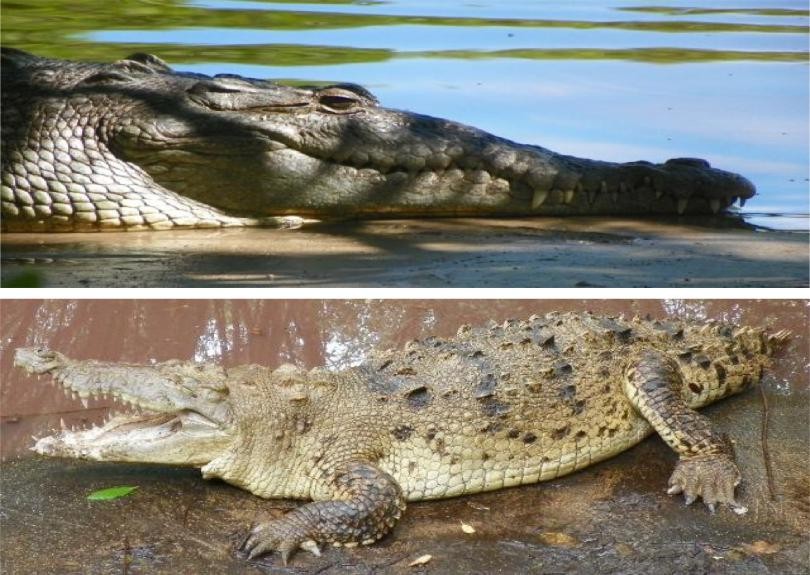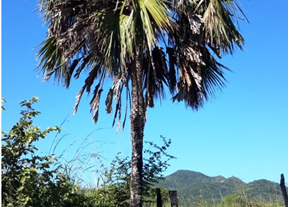By Tommy Clarkson from the August 2010 Edition
……..discusses some basics in starting a tropical garden
The lush and colorful vegetation which abounds in west coastal Mexico is mind bogglingly beautiful. Around here we have a vast, highly diverse and simply sumptuous array of plants, flora and trees from which to choose. Perhaps the biggest inhibitor to fully realizing one’s own personal Garden of Eden may be the amount of space with which one has to work!
And great fringe benefits? You bet! Beyond the colors, shades, hues and fragrances, once established, your jungle oasis will present all manner of new friends such as vibrantly active hummingbirds, flipping, flopping butterflies and bees busily pollinating your flowers.
But before grabbing your shovel, rake and hose, let’s establish some parameters and objectives for this project, such as: What is the look you wish to achieve? What is your desired time frame for achieving an end result? What’s your budget? How much upkeep and maintenance are you prepared to commit to this project?
There are four basic – and rather obvious – factors in creating and maintaining a beautiful garden. They are: sun, water, soil and food (fertilizer). The most important is that first one – the sun. Now, most tropical plants require lots of sunlight – “well, duh Tommy, no kidding!” Of course, this varies from plant to plant, but as a rule of thumb we should say that they need a minimum of six hours of direct sunlight each day – week-ends and holidays included!
Dos – watering – be it natural rain or through irrigation, es muey importante! You try standing in the direct, hot sun a minimum of six hours a day and see if you don’t get a bit parched and dry! But beyond determining the proper amount of water, does the soil allow moisture to pass through it or does it hold it in a muddy mess around your plants’ root feet? Often overlooked, good drainage is as important as that third component, the composition of the soil itself.
And lastly, it’s important that you do a plant by plant analysis regarding fertilization and spraying for pest and diseases As in all worthwhile endeavors, before proceeding, get informed. Borrow a book from the library, look for resources on-line, talk to a nurseryman, ask me – but, one way or another, find out.
Don’t just assume sun, soil and water is all your garden needs. Treat these plants like your children. Do so and they’ll mature well as a result of the care you gave them during their formulative and growing years! Heck, I know of no few plant life that has given more enjoyment – and turned out better – than some folk’s kids!
Now, in my opinion – which may be worth just about as much as you’ve paid for it – there are several, pretty much, “gotta’ have” plants for a tropical garden. I have written about all of these in my column “Planting Roots in Mexico” or, in case you missed any of them let me know and I can e-mail you a copy.
This list could easily go into the hundreds but I’ve endeavored to select a good sampling in the form of a basic dozen made up of four each tropical flowers, plants and palms. Please simply consider it as a possible starting point for an easy to establish and maintain tropical garden. These are as follows:
• Bougainvillea – Nearly year around, awash with breathtaking color, these hardy plants can act as trellis climbing vines, brightly colored bushes or mid-sized trees, as well as acting as a great natural fence! Regular trimming and pruning is imperative.
• Hibiscus – I’ve heard them called “the tropical garden’s blooming workhorse.” Available in a variety of colors, some have 9-12 inch plate-sized, crepe-like blooms. While they last but one day, often there are several on the plant at any given time.
• Heleconia – There are scores of varieties of this stunningly beautiful flower. Magnificent in the wild or mood-settingly appropriate when cut and arranged in a vase indoors, these are some very special and spectacular flowers!
• Bird of Paradise – Virtually unparalleled, it is the quintessential tropical flower and a cousin to the Heliconia, Traveller’s Palms and Banana trees. Suffice it to say, it will provide an exotic and delightful addition of rich allure to your little corner of heaven.
• Elephant Ears – Incorporate these stout, fast growing, clumping herbs as the verdant backdrop of lower tier flora beneath the palms. Their floppy, arrowhead shaped leaves, growing up to six feet in length fairly scream “Tropics. Here. Now!”
• Banana Plants – Now surely this has “appeal!” There are various varieties of assorted sizes. All grow fast and give an instant “jungle feel” to your landscape plus the benefit of providing you with fun, nutritious bunches fresh, nutritious bananas!
• Pineapple – Like the banana, how fun is it to harvest and serve pineapples that you have grown yourself to visitors from “up north”! Super easy to plant and maintain, you may wish to have several – in various stages of maturity – around your garden
Sago Palm – Actually not a palm, these beauties are in fact a cycad. However, their attractiveness – though somewhat slow growing – is guaranteed to turn heads. They can be enjoyed either potted or strategically placed with other foliage in your garden.
Foxtail Palm – The most costly of this lot but well worth it! Originally from northeastern Australia, they are rather new to the Americas. But these magnificent, mid-sized, self cleaning palms always generate comments of praise and admiration.
• Ruffled Fan Palm – This little guy prefers shade but will provide that necessary counter point of natural beauty to taller palms. Its dark green, bright and shiny, undivided, notch-edged, circular leaves beg to be admired up close and personal.
• Pygmy Date Palm – Small of stature, slow growing, but easy to care for and visually quite pleasing with its graceful, delicate, dark grey-green, pinnate, crown of gently arched leaves,
singularly or grouped, this is a great accent palm.
Coconut Palm – Ahhh, the venerable and ubiquitous coconut! Easy to find, plant and the virtual symbol of all that is tropical. Every home should have one! For the smaller gardens I would suggest one of the shorter hybrids like the Golden Coconut.
Download the full edition or view it online
—
Tommy Clarkson is a bit of a renaissance man. He’s lived and worked in locales as disparate as the 1.2 square mile island of Kwajalein to war-torn Iraq, from aboard he and Patty’s boat berthed out of Sea Bright, NJ to Thailand, Germany, Hawaii and Viet Nam; He’s taught classes and courses on creative writing and mass communications from the elementary grades to graduate level; He’s spoken to a wide array of meetings, conferences and assemblages on topics as varied as Buddhism, strategic marketing and tropical plants; In the latter category he and Patty’s recently book, “The Civilized Jungle” – written for the lay gardener – has been heralded as “the best tropical plant book in the last ten years”; And, according to Trip Advisor, their spectacular tropical creation – Ola Brisa Gardens – is the “Number One Tour destination in Manzanillo”.



